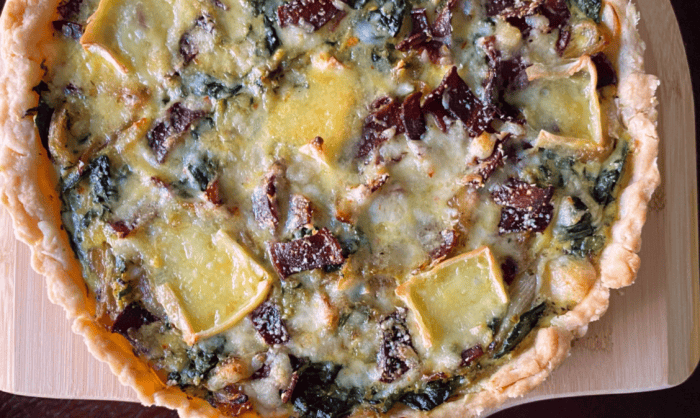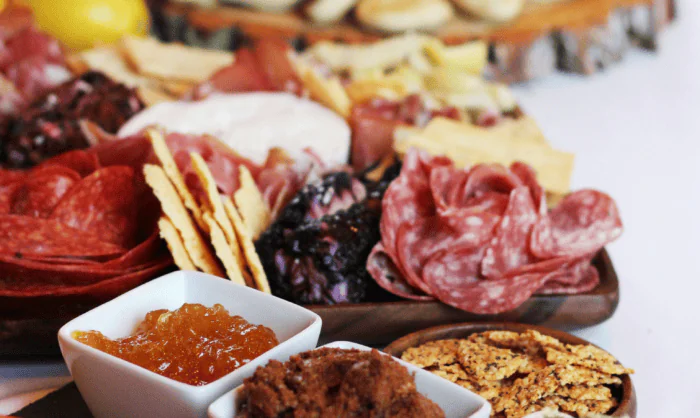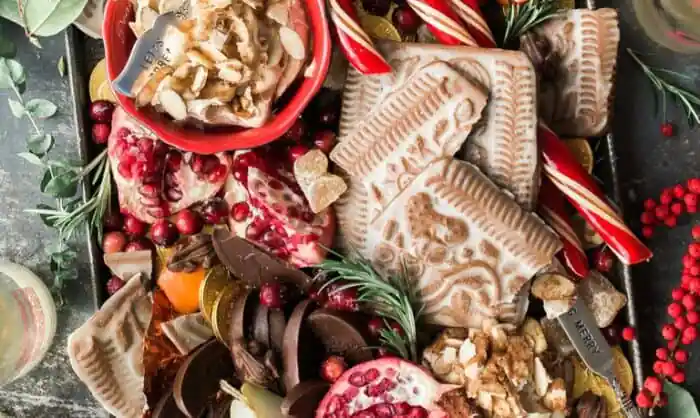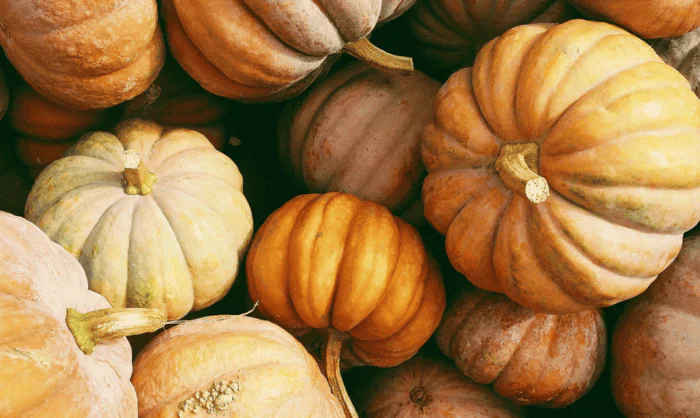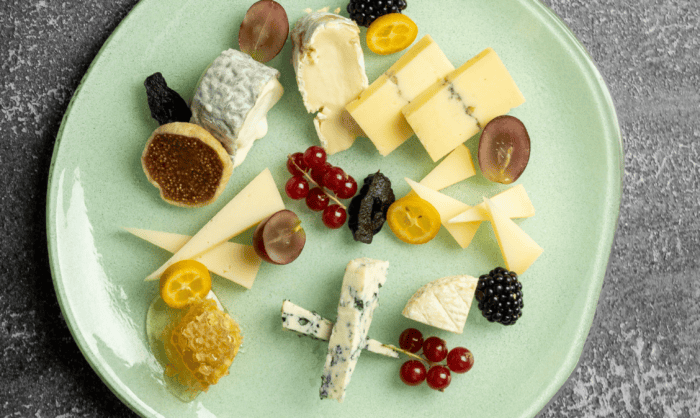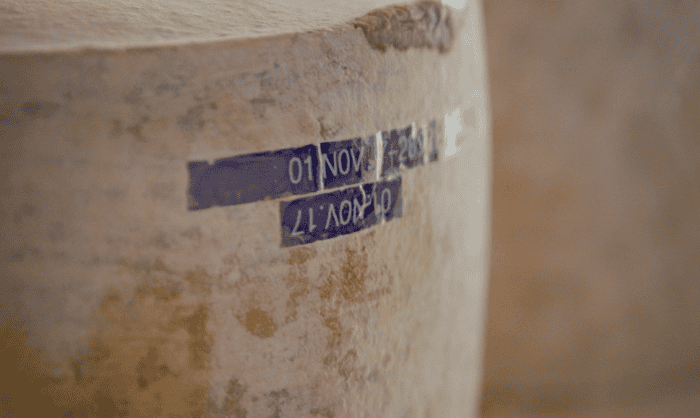Blog
Blue Cheese Tart (The Perfect Vegetarian Christmas Main)
Blue Cheese Tart (With Swiss Cheese) – A Vegetarian Main for Christmas
This homemade blue cheese tart is topped with a layer of Swiss cheese and wrapped in golden puff pastry. This elegant tart is hearty enough to be the star of the meal and pairs beautifully with festive sides.
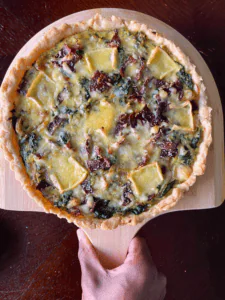
This recipe makes the perfect vegetarian main course or a side to pair with roast turkey, ham, and so on. The creamy blue cheese combines caramelized onions and a flaky crust—the thin slices of Swiss cheese layer on top to create a golden, bubbly finish.
Ingredients
Here’s what you’ll need to round up:
The pastry
- 1 sheet of puff pastry (store-bought or homemade)
- 1 tbsp flour (for rolling)
The filling
- 2 tbsp olive oil
- 2 medium onions, thinly sliced
- 2 cloves garlic, minced
- 1 cup heavy cream
- 3 large eggs
- 3 oz (85 g) blue cheese, crumbled
- 1 tsp fresh thyme leaves
- 1/2 tsp salt
- 1/4 tsp black pepper
The topping
- 4–5 slices of Swiss cheese
- Fresh thyme sprigs (for garnish, optional)
Instructions
Follow this step-by-step guide to make your own easy, absolutely delicious blue cheese tart.
Prepare the pastry
- Preheat your oven to 375°F (190°C).
- Roll out the puff pastry on a lightly floured surface and fit it into a 9-inch tart pan with a removable bottom. Trim the edges and prick the base with a fork to prevent puffing.
- Blind bake the pastry by lining it with parchment paper and filling it with pie weights or dried beans. Bake for 10 minutes, then remove the weights and bake for another 5 minutes until lightly golden.
Caramelize the onions
- Heat olive oil in a skillet over medium heat. Add sliced onions and cook, stirring occasionally, until golden and caramelized, about 15–20 minutes. Add garlic and cook for another minute. Set aside to cool slightly.
Make the filling
- Whisk together the heavy cream, eggs, blue cheese, thyme, salt, and pepper in a mixing bowl. Stir in the caramelized onions.
Assemble the tart
- Pour the filling into the pre-baked tart shell, spreading it evenly.
- Lay the Swiss cheese slices over the top, slightly overlapping to cover the surface.
Bake
- Place the tart in the oven and bake for 25–30 minutes, or until the filling is set and the Swiss cheese is golden and bubbling.
Serve
- Let the tart cool for 5–10 minutes before slicing. Garnish with fresh thyme sprigs for a festive touch, and serve warm.
Top Tips
- Choose quality cheese: Use a creamy, blue cheese like our Glacier Wildfire Gorgonzola for a balanced flavor. Go for Swiss cheese that melts beautifully, such as Gruyère or Emmental.
- Customize add-ins: Add sautéed mushrooms or roasted red peppers for extra flavor and texture.
- Prevent a soggy bottom: Ensure your tart crust is fully blind-baked before adding the filling to avoid a soggy base.
How to Store Leftovers
Cover the tart tightly with plastic wrap or place it in an airtight container. Store in the refrigerator for up to 3 days.
Slice the tart and wrap individual pieces in foil, then freeze for up to 1 month. Thaw overnight in the fridge before reheating. Warm slices in the oven at 300°F (150°C) until heated. For a crispy crust, reheat directly on a baking sheet.
Wrapping It Up
Don’t forget to check out our full range of cheese and accompaniments. We have so much to choose from and use as gifts and ingredients.
Artichoke Dip With Goat Cheese And Spinach
This artichoke dip with goat cheese is a creamy, savory dip made with goat cheese, spinach, artichokes, and Parmesan. It is an easy and perfect festive appetizer for a cozy gathering. Serve it warm with crackers, bread, or fresh vegetables for dipping.
If you loved this recipe, check out our post about Cheese Pairing with Festive Desserts: Unexpected Combos that Work.
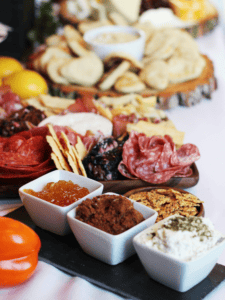
Artichoke Dip with Goat Cheese and Spinach
This simple artichoke dip can be paired with other dips and served to kick off the evening. The goat cheese balances the rich, creamy artichokes.
Ingredients
- 8 oz goat cheese (chèvre), softened
- 1/2 cup grated Parmesan cheese
- 1/2 cup sour cream or Greek yogurt
- 1/4 cup cream cheese, softened
- 1 cup frozen spinach, thawed and drained (or 1 cup fresh spinach, chopped)
- 1 cup marinated artichoke hearts, chopped
- 1/4 cup mayonnaise
- 2 cloves garlic, minced
- 1 tbsp lemon juice
- Salt and pepper, to taste
- 1/4 tsp red pepper flakes (optional)
- 1/2 cup shredded mozzarella cheese (for topping)
Instructions
- Preheat oven: Preheat your oven to 375°F (190°C).
- Prepare the spinach: If using frozen spinach, thaw and squeeze out any excess moisture. If using fresh spinach, sauté it in a pan over medium heat for 2-3 minutes until wilted, then drain.
- Mix the base: In a large mixing bowl, combine the goat cheese, cream cheese, sour cream (or Greek yogurt), mayonnaise, and lemon juice. Stir until smooth and creamy.
- Add the flavorings: Add the grated Parmesan, garlic, chopped spinach, chopped artichokes, red pepper flakes (if using), and season with salt and pepper. Stir well until everything is evenly incorporated.
- Transfer to a baking dish: Spoon the mixture into a greased 9×9-inch (or similar-sized) baking dish, spreading it evenly.
- Top with mozzarella: Sprinkle the shredded mozzarella cheese over the top of the dip.
- Bake: Bake in the oven for 20-25 minutes or until the top is golden and bubbly.
- Serve: Let the dip cool slightly before serving. Serve warm with crackers, sliced baguette, or fresh vegetable sticks (like celery, carrots, or cucumber).
Top Tips
- Spinach: Be sure to squeeze out all excess liquid from thawed frozen spinach to prevent the dip from being too watery.
- Artichokes: Marinated artichokes provide extra flavor, but you can use canned artichokes if you prefer a milder taste.
- Add-ins: Feel free to experiment with other add-ins like sautéed mushrooms, roasted red peppers, or a handful of fresh herbs (such as thyme or basil) to change the flavor profile.
- Goat cheese consistency: For a smoother dip, ensure the goat cheese is softened before mixing. If you prefer a chunkier texture, use crumbled goat cheese instead.
How to Store it
- Refrigeration: Store leftover dip in an airtight container in the fridge for 3-4 days.
- Reheating: Reheat gently in the oven at 350°F (175°C) for 10-15 minutes, or microwave in 30-second intervals until heated.
- Freezing: This dip can be frozen for up to 2 months. Let the dip cool completely to freeze, then transfer it to an airtight container or freezer-safe dish. When ready to serve, thaw overnight in the fridge and reheat in the oven.
Wrapping It Up
This creamy dip is guaranteed to be a crowd-pleaser with its rich flavors and smooth texture, making it an excellent choice for your next holiday party or gathering! Reach out to us with any questions via our contact page.
Cheese Pairing with Festive Desserts: Unexpected Combos that Work
Cheese Pairing Ideas For Festive Desserts: Unexpected Combos that Work
Cheese pairing isn’t just about cheese and crackers as part of your snacks—it can bring an exciting twist to your dessert table, too! Pairing cheese with festive sweets creates unique flavor experiences that enhance both sweet and savory elements.

Explore unexpected cheese pairing combinations like sharp cheddar with apple pie or creamy blue cheese with dark chocolate. Plus, try out a cheerful dessert board.
In this article we share cheese pairing ideas with gingerbread cookies, whipped apple butter, goat cheese (Chevin), candy canes, and seasonal fruits for an easy-to-assemble, crowd-pleasing spread.
A Festive Dessert Cheese Board with Gingerbread, Whipped Apple Butter, Goat Cheese & More
For a truly festive dessert board, bring together traditional holiday flavors with a fun mix of treats. Start with gingerbread cookies for a spiced and sweet base that pairs well with creamy cheeses.
Next, add a small bowl of whipped apple butter for a sweet, smooth spread. This is especially delicious when combined with goat cheese (Chevre). Goat’s cheese has a mild tanginess contrasts beautifully with the sweet apple butter and spicy gingerbread.
Round out the board with some seasonal flair by adding mini candy canes and fresh holiday fruits like pomegranate arils, clementines, and red grapes. These fruits add a burst of color and juicy sweetness that complements the other items on the board.
With these exciting cheese and dessert pairings, your holiday dessert spread will be as unique as it is delicious.
Cheddar and Apple Pie
The pairing of Canadian aged cheddar cheese with apple pie is a classic that has stood the test of time.
The sharp, salty taste of cheddar complements the sweetness and warmth of spiced apple filling. This combination creates a perfect balance of flavors.
For this pairing, go for a sharp or aged cheddar. It offers a strong, complex flavor that won’t get lost against the apple pie’s sweetness.
Serve small wedges of cheddar alongside individual slices of apple pie or mini hand pies for easy enjoyment.
You could also get creative by baking shredded cheddar directly onto the crust for an elevated version of this beloved pairing. Another fun idea is to serve apple and cheddar skewers—alternate cubes of cheddar with apple slices for a tasty, bite-sized treat.
Blue Cheese and Dark Chocolate
Blue cheese and dark chocolate might seem like an unexpected match, but their rich flavors complement each other beautifully. The earthy, slightly tangy flavor of blue cheese plays well with the bold bitterness of dark chocolate.
On your dessert board, break the dark chocolate into small pieces and place them next to a wedge of blue cheese. Or, create small bites by spreading a little blue cheese on top of dark chocolate squares.
You could also get creative by making dark chocolate truffles with a hint of blue cheese in the center—an adventurous twist for your holiday spread!
Beer Cheese and Fig Jam
Beer cheese and fig jam is a gentle, crowd-pleasing pairing that brings joy to any dessert table. The mild, buttery flavor of beer cheese pairs beautifully with the sweetness of our housebrand fig jam, which adds a hint of earthy complexity.
For this pairing, simply place a dollop of fig jam on each slice of beer cheese, or serve the cheese and fig jam side by side for easy spreading.
This combination works beautifully with fresh figs, sliced pears, or crackers.
Wrapping It Up
We have the most incredible cheese selective available for you to browse. Don’t miss our meats and accompaniments too!
Thanksgiving Cheese Ideas For Kids
Thanksgiving Cheese Ideas for Kids
If you’re hunting for Thanksgiving cheese ideas for kids, we’ve got you! When setting up the Thanksgiving table, cheese is an easy and popular snack choice. Typically, kids love cheese just as much as adults, so don’t leave them out!
This year, try out one or two of these fun and easy Thanksgiving cheese ideas for kids. Choose snacks that are festive, tasty, and perfect for little hands.

Cheese Turkeys
Cheese turkeys are a playful way to bring a touch of Thanksgiving spirit to snack time. To make these adorable treats, all you need are cheese rounds, veggie slices, and pretzel sticks.
Here’s how to create your own cheesy turkeys:
- Prepare the cheese rounds: choose something like Brick cheese that you can slice and can into rounds. This works well for this project. Place one cheese round per turkey on a platter.
- Add pretzel “feathers”: insert small pretzel sticks into the top half of the cheese round to create feather-like fanning behind the turkey’s head.
- Decorate with veggies: use a small slice of carrot for the turkey’s beak and black olives or edible markers for eyes.
- Add “wattles”: a small piece of red pepper or dried cranberry works perfectly to give your turkey that Thanksgiving charm.
Kids can even help assemble their own cheese turkeys, adding a personal touch to the display. Arrange the turkeys on a tray with additional veggie sticks and crackers to create a Thanksgiving-themed snack platter that’s both fun and delicious.
Mini Cheese Logs
Cheese sticks are a holiday classic, but turning them into mini versions on a stick makes them extra fun and easy for kids to enjoy.
These bite-sized treats are perfect for little hands, and the different coatings give each one a unique flavor and look. Here’s how to make your own platter of mini cheese balls on a stick.
Ingredients
- 8 oz. cream cheese or goat’s cheese, softened
- 1 cup shredded white cheddar cheese
- 1 tsp garlic powder
- 1 tsp onion powder
- Salt and pepper to taste
- Toppings for rolling (chopped nuts, dried cherries, fresh herbs like parsley or chives)
- Mini skewers
Instructions
- Make the cheese mixture: In a bowl, combine the cream or goat’s cheese, shredded cheddar, garlic powder, onion powder, salt, and pepper. Mix well until everything is evenly combined and smooth.
- Form the cheese logs: Use a spoon to scoop small portions of the cheese mixture, then roll each into a oblong log shape with your hands.
- Roll in toppings: Set out small bowls of your toppings (chopped nuts, dried cranberries, herbs) and roll each cheese ball in your choice of coating. For a festive look, create a variety platter by using different toppings for different balls.
- Assemble with sticks: Insert a toothpick or mini skewer into each cheese log to make it easy for kids to grab.
Arrange the mini cheese logs on a platter, alternating between the different coatings to create a colorful display. These little snacks are perfect for a Thanksgiving party or a family gathering, giving kids the chance to try new flavors while enjoying a familiar treat.
Cheese and Fruit Kabobs
If your kids like fruit, adding it to cheese on a kabob is a surefire way to make it even more appealing. Use cubes of mild cheese, like cheddar or mozzarella, and pair them with kid-friendly fruits like grapes, strawberries, or pineapple.
Simply thread the cheese and fruit onto small skewers or toothpicks, alternating between the two for a fun and nutritious snack. This snack is quick to assemble and can be tailored to include your kids’ favorite fruits.
These kid-friendly cheese snacks bring holiday joy to the table with minimal fuss and lots of fun. They’re easy to make, visually festive, and, best of all, they help make holiday gatherings more inclusive and enjoyable for everyone—even the smallest guests!
Wrapping It Up
We hope this post brought you some family fun inspiration! Don’t forget to check out our selection of cheeses here, plus our selection of accompaniments.
Seasonal Cheese Pairings: What to Enjoy Each Season
Seasonal Cheese Pairings: What to Enjoy Each Season
Seasonal cheese pairing comes naturally if you think about it. Each season has its own set of classic tastes and textures that can be linked to specific cheeses. Knowing which ingredients complement which cheese helps you create an unforgettable experience.
Here’s a guide to cheese pairings that bring out the best of each season, with ideas to inspire your table year-round.
Spring: Fresh and Zesty
Spring is a time for renewal, and fresh flavors dominate as gardens burst to life. Soft cheeses like chèvre (goat cheese), ricotta, and mozzarella work beautifully with spring’s bounty. Chèvre’s tangy notes blend perfectly with ingredients like sweet, dried strawberries or fresh peas.

Pairing idea: A spring cheese board with chèvre, strawberries, sugar snap peas, mixed nuts, and a drizzle of honey. Add a handful of toasted almonds or a few sprigs of mint for added freshness. Pretty-up your board with edible spring flowers like nasturtiums.
For something more savory, layer ricotta or goat’s cheese on toast and top it with sliced radishes, cracked black pepper, and a sprinkle of sea salt. The peppery bite of radish against creamy ricotta creates a balanced flavor that screams spring.
Summer: Bright and Juicy
Summer’s bounty brings vibrant, juicy produce that begs to be paired with creamy, mild cheeses. Yogurt cheese and double cream gouda are excellent choices for hot-weather dishes. Yogurt cheese’s creamy, milky interior pairs beautifully with tomatoes and fresh basil. Gouda, on the other hand, is tastyb with rich, sun-ripened fruits like watermelon and peaches.

Pairing idea: Make a summery salad by tossing chunks of juicy watermelon, gouda, fresh mint, and a sprinkle of black sesame seeds.
For an extra touch, drizzle some balsamic glaze over the top.
Alternatively, use yogurt cheese in a simple Caprese salad (instead of traditional fresh mozzarella) with ripe tomatoes, fresh basil, and a drizzle of olive oil. Serve with crusty bread for a Mediterranean-inspired pairing perfect for balmy summer evenings.
Fall: Earthy and Warm
As the leaves turn and temperatures drop, it’s time to embrace hearty, earthier flavors. Garlic cheddar, gruyère, and blue cheese all complement the cozy, nutty taste of fall produce. Apples, pears, figs, and nuts are natural companions to these cheeses, enhancing their rich, layered flavors.
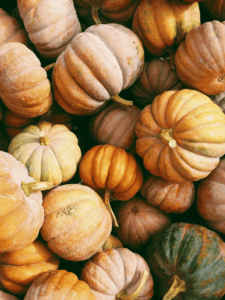
Pairing idea: For a seasonal cheese board, pair the cheddar with apple butter, pumpkin butter, cinnamon almonds, and a dollop of fig jam. The combination of sweet, tangy, and savory flavors is autumn on a plate.
Another idea is to make a warm, gooey gruyère fondue with cubed roasted squash, mushrooms, and hearty bread on the side.
The earthy, caramelized flavors of the roasted vegetables add a rustic depth to the creamy cheese.
Winter: Rich and Indulgent
Winter calls for cheeses with deep, robust flavors that match the season’s indulgence. Provolone, camembert, and pecorino offer comforting richness that works well with winter fruits like pomegranates, citrus, cranberries, and dried figs.
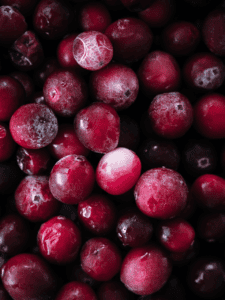
Warming spices like cinnamon and cloves also add holiday charm to cheese pairings.
Pairing idea: Baked camembert topped with blackberry pecan syrup, toasted cashews, and a drizzle of honey is a classic winter dish that combines sweet, tart, and creamy textures. Serve with sliced baguette for a crowd-pleaser at any holiday gathering.
Or, try a wedge of pecorino with blood orange slices, arugula, and a light vinaigrette for a simple yet luxurious winter salad that balances the cheese’s sharpness with citrusy brightness.
Bringing It All Together
Cheese pairings don’t have to be complicated—let the season’s ingredients guide you.
From fresh spring berries to hearty winter nuts and fruit, seasonal pairings allow you to enjoy cheese at its peak and celebrate the flavors of each season.
Experiment with local produce and some of our cheeses, and you’ll discover new combinations that make each season a little more delicious.
Cheese And Beer Pairings: How To Match Cheeses With Different Types Of Beer
Cheese and beer: when it comes to delightful pairings, few combinations can rival this classic duo, other than cheese and wine, of course.
Beer and cheese come in tons of varieties. Both are loaded with unique flavors and textures that can enhance one another.

Understanding how to match different types of cheese with various beers can elevate your tasting experience. Let’s dive into how to pair them:
The Basics of Cheese and Beer Pairing
The fundamental principle of pairing cheese and beer is to balance flavors and textures. You should match intensity with intensity or contrast flavors to create a more dynamic tasting experience.
Here are some key points to consider when making your selections:
- Create contrasting flavors: Identify the flavor profiles of both the cheese and the beer. Cheeses can be creamy, nutty, sharp, or tangy, while beers can be malty, hoppy, fruity, or sour. Aim for complementary or contrasting flavors to create a harmonious balance.
- Texture matters: The texture of cheese—whether it’s soft, semi-soft, hard, or crumbly—can influence your beer choice. Creamy cheeses often pair well with carbonated beers that cut through richness, while firmer cheeses may hold up better against stronger ales or stouts.
- Regional pairings: Pairing local cheeses with regional beers creates perfect synergy. Regional flavors often have historical and cultural ties that enhances the overall tasting experience.
Perfect Pairings to Try
Here are some classic cheese and beer pairings to inspire your next tasting adventure:
1. Cheddar and IPA
The sharp, nutty flavor of aged cheddar beautifully complements the hoppy bitterness of an IPA. The boldness of the IPA cuts through the creaminess of the cheddar, while its fruity notes can highlight the cheese’s complex flavors.
For an added twist, try pairing it with a cheddar with a bit of caramelization, which enhances the sweetness of both the cheese and the beer.
2. Brie and wheat beer
The rich, buttery texture of brie pairs perfectly with the light, refreshing qualities of wheat beers like Hefeweizen or Witbier.
The fruity esters and soft mouthfeel of these beers complement the creaminess of brie, while the light acidity can help balance its richness.
This pairing makes for a fantastic starter at any gathering.
3. Blue cheese and stout
Blue cheese’s strong, pungent flavors find a delightful partner in a robust stout. The beer’s dark, roasted malt flavors enhance the cheese’s boldness, while the cheese’s creamy texture balances the beer’s bitterness.
For a yummy contrast, consider a sweet stout, which can amplify the blue cheese’s tangy sweetness.
4. Goat cheese and saison
The tangy, earthy flavors of goat cheese shine when partnered with a Saison.
The beer’s fruity and spicy notes elevate the cheese’s fresh, creamy characteristics. This pairing is perfect for spring and summer gatherings, bringing a refreshing touch to your palate.
5. Parmesan and pale ale
The nutty, salty flavors of aged Parmesan go beautifully with the crispness of a pale ale. The beer’s moderate hop bitterness complements the cheese’s richness without overwhelming it.
This pairing is ideal for snacking, making it a perfect choice for cheese boards or casual get-togethers.
Wrapping it Up
Cheese and beer pairings can open up a world of flavor exploration. Whether hosting a party or enjoying a quiet night at home, experimenting with different combinations can lead to delightful discoveries.
Dive into our cheese selection – we have spent years curating the perfect offering for you. Don’t forget your accompaniments for the perfect cheese partners!
Best Cheeses from Around the World: A Journey Through International Cheese Varieties and Their Origins
The best cheeses are found in all four corners of the world. Cheese is more than just a delicious food type – it is a universal (love) language that almost every culture embraces in its cuisine.
Each variety tells a story, carrying centuries of tradition, local flavors, and the essence of the regions they hail from. Let’s check out the most popular global cheeses and a bit about each cheese:
France: Brie – The King of Cheese

Beautiful French Town
France is synonymous with fine cuisine, and its cheese is no exception. Among the many varieties, Brie is probably the most well-loved.
Originally from the Île-de-France region, this soft, creamy cheese has been enjoyed since the 8th century.
It is known for its delicate, bloomy rind and buttery flavor. Brie’s versatility makes it a favorite on cheeseboards and gourmet dishes.
Whether paired with fruits and nuts or melted into pastries, Brie exemplifies French sophistication.
Italy: Parmigiano Reggiano – The Pride of Parma
When it comes to Italian cheese, Parmigiano Reggiano reigns supreme. Often referred to as the “King of Cheeses,” this hard, crumbly delicacy is produced in the Emilia-Romagna region. It’s one of the best cheeses to top pasta with!
Its production follows strict guidelines to ensure authenticity. It has a maturation process lasting up to 36 months.
The result is a complex, nutty flavor with a salty kick, perfect for grating. It’s also a delicious snack with a splash of balsamic vinegar. Parmigiano Reggiano is a testament to Italy’s dedication to quality and tradition.
Switzerland: Emmental – The Classic Swiss Cheese

Swiss goat
When most people think of Swiss cheese, they are picturing Emmental. This is the iconic cheese with holes. Originating from the Emmental Valley in Switzerland, this cheese has a mild, slightly nutty flavor and smooth, firm texture.
The distinctive holes are formed during the fermentation process, making Emmental instantly recognizable. Whether melted in a fondue pot or layered in a sandwich, this cheese brings a touch of Swiss charm to any meal.
Spain: Manchego – The Jewel of La Mancha
From the sun-drenched plains of La Mancha, Spain, comes Manchego, a firm and buttery cheese made from sheep’s milk. This cheese dates back to the Bronze Age, and its distinctive flavor reflects the arid, grassy landscape where the Manchega sheep graze.
With its nutty, slightly sweet taste and crumbly texture, Manchego pairs beautifully with quince paste and cured meats. It is a cornerstone of Spanish cuisine and an ambassador of the country’s rich culinary heritage.
England: Cheddar – A Global Favorite
While Cheddar is now produced worldwide, its origins trace back to the village of Cheddar in Somerset, England.
This versatile cheese comes in various stages of maturity, from mild and creamy to sharp and tangy. Cheddar has a firm texture and a complex flavor profile, making it a popular choice for everything from sandwiches to gourmet cooking.
The traditional method of making cheddar involves “cheddaring,” a process that gives the cheese its unique structure and taste. Today, it remains a staple on cheeseboards and in kitchens globally.
Greece: Feta – A Mediterranean Treasure
No exploration of international cheeses would be complete without Feta, the crumbly, tangy cheese that has been a part of Greek culture for thousands of years.
Feta is made from sheep’s milk or a mixture of sheep’s and goat’s milk, and it is brined with a characteristic saltiness. Its firm yet creamy texture makes it perfect for salads, especially the classic Greek salad, and its bright flavor is a hallmark of Mediterranean cuisine.
Wrapping Up: The Best Cheeses
Cheese is a passport to the world, with each variety offering a taste of its homeland. From the rolling hills of France to the sun-soaked plains of Spain. These cheeses showcase the diversity of cultures and traditions that have shaped them.
Whether you prefer the creamy decadence of Brie or the bold tang of Feta, exploring international cheese varieties is a journey. We hope this post enriched your understanding of global culinary traditions.
Lastly, next time you reach for a wedge of cheese, remember that you’re not just enjoying a snack – you’re savoring a piece of history. Learn more about our business here and why we love what we do!
The Nutritional Value Of Cheese (Health Insights)
The nutritional value of cheese is not exactly something people talk about often. This satisfying, tasty, and tangy ingredient is a beloved staple in many diets worldwide. Believe it or not, cheese brings tons of nutritional benefits that make it a valuable part of a balanced diet.
Let’s dive into the health benefits and nutritional value of cheese!
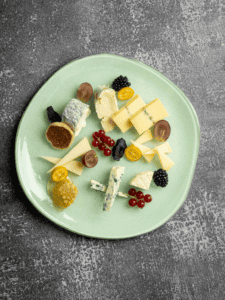
Nutritional Value Of Cheese
Rich in Essential Nutrients
Cheese is a nutritional powerhouse packed with essential vitamins and minerals that support overall health. One of its most significant contributions is calcium, a vital mineral for maintaining strong bones and teeth.
Just one ounce of cheese can provide up to 20% of the recommended daily calcium intake, making it an excellent choice for those looking to boost their bone health. Check out the calcium in blue cheese here.
Over and above just calcium, cheese is also a great source of protein. Protein is crucial for muscle repair, growth, and overall body function. A single serving of cheese can contain up to 7 grams of protein, depending on the type.
This high protein content makes cheese an excellent snack for those looking to increase their protein intake, especially vegetarians who rely on dairy products as a primary protein source.
Packed with Vitamins
Cheese is not only rich in minerals but also loaded with essential vitamins, including Vitamin A, B12, and K2.
Vitamin A supports eye health, immune function, and skin health, while Vitamin B12 is crucial for nerve function and the production of red blood cells.
Vitamin K2, often found in aged cheeses like Gouda and Swiss, plays a vital role in bone health by helping calcium bind to the bones.
This makes cheese a valuable food for preventing osteoporosis and supporting cardiovascular health.
Promotes Gut Health
One of the lesser-known benefits of cheese is its potential to promote gut health. Many types of cheese, particularly fermented varieties like aged cheddar, blue cheese, and Gouda, contain probiotics.
These beneficial bacteria support a healthy gut microbiome, which is essential for digestion, immune function, and even mental health.
Regular consumption of probiotic-rich foods like cheese can help maintain a healthy balance of gut bacteria, which is linked to numerous health benefits.
Supports Heart Health
While cheese has often been criticized for its saturated fat content, recent studies suggest that not all saturated fats are created equal.
The fats found in cheese may actually support heart health when consumed in moderation. Certain types of cheese, such as mozzarella and Swiss, are lower in fat and sodium, making them heart-friendly options.
Aids in Weight Management
Contrary to popular belief, cheese can be a helpful ally in weight management. The high protein and fat content in cheese contribute to a feeling of fullness, which can reduce overall calorie intake.
Cheese is also low in carbohydrates, making it a suitable option for those following low-carb or ketogenic diets. Choosing cheeses with lower fat content, like cottage cheese or feta, can provide the same satiety benefits without adding excessive calories.
Wrapping It Up
Incorporating cheese into your diet offers a range of health benefits, from supporting bone and heart health to promoting a healthy gut. Its rich nutritional profile makes it a valuable food that can contribute to overall well-being.
Check out our About Us Page and learn more about how we’ve been serving the best cheese to our community since the 50s!
A Quick Look at the History of Cheese Making Through the Ages
The history of cheese is as rich and varied as the many types of cheese we enjoy today. Cheese-making likely began over 7,000 years ago in the Fertile Crescent, a region that spans modern-day Middle East and North Africa.
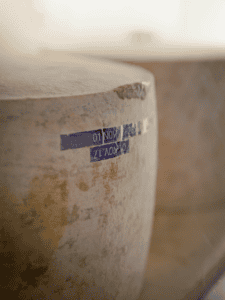
Though the exact origins remain shrouded in mystery, it is widely believed that cheese was discovered accidentally.
Early farmers stored milk in containers made from animal stomachs, which contained the enzyme rennet. This enzyme caused the milk to coagulate and separate into curds and whey, creating the first cheese.
Cheese-making quickly spread across the ancient world, becoming essential for preserving milk.
The Egyptians, Greeks, and Romans all developed their own cheese varieties and techniques, each contributing to the art and science of cheese-making. Cheese was so valued in ancient times that it was often used as a form of currency or as a tribute to the gods.
Cheese in the Roman Empire: An Age of Experimentation
The Romans were instrumental in spreading cheese-making knowledge throughout Europe. As the Roman Empire expanded, so did the diversity of cheese production.
The Romans were known for playing around and experimenting with different types of milk (including sheep, goat, and cow) and various aging techniques. They also introduced the concept of hard and soft cheeses, with more than 20 types recorded by the first century A.D.
Roman soldiers carried cheese as a portable and nutritious food, which helped further disseminate cheese-making techniques across Europe.
As Roman influence waned, these practices were absorbed and adapted by the various cultures that emerged in Europe. This led to the development of the regional cheeses we know today. Examples are Parmigiano-Reggiano in Italy and Roquefort in France.
The Middle Ages: Monastic Influence on Cheese-Making
The Middle Ages marked a significant period in cheese-making history, particularly within European monasteries. Monks were crucial in preserving and advancing cheese-making techniques during this era.
They experimented with aging processes, bacteria cultures, and various types of milk to create some of the most beloved cheeses still enjoyed today.
Monasteries became centers of cheese production, and many of the cheeses developed during this time are still produced similarly. For example, cheeses like Brie, Camembert, and Munster owe their existence to monastic ingenuity.
The strict rules and traditions of monastic life also ensured that cheese-making techniques were passed down through generations with little alteration, preserving the quality and authenticity of these cheeses.
The Renaissance and Beyond: Cheese as a Culinary Staple
The Renaissance renewed interest in gastronomy, and cheese became a key ingredient in European cuisine. As trade routes expanded, cheese was introduced to new regions and became an important part of the diet across the continent.
New varieties emerged as cheese-makers experimented with different aging processes, molds, and spices.
During this period, cheese also began to gain recognition beyond Europe. European settlers brought cheese-making techniques to the New World. This is where new types of cheese, like Cheddar and Monterey Jack, were developed.
The industrial revolution in the 19th century further transformed cheese-making. This introduced mass production techniques that made cheese more accessible to a growing population.
Modern Cheese-Making: Tradition Meets Innovation
Today, cheese-making is a global industry that blends ancient techniques with modern technology. While many cheeses are still made using traditional methods, innovations in cheese-making have created new varieties and flavors.
The rise of artisanal cheese-making has also sparked a renewed interest in traditional methods and local ingredients, leading to a resurgence of regional cheeses that were once at risk of disappearing.
Wrapping Up The History Of Cheese
We hope this article gave you more insight into the wonderful history of cheese! Don’t forget to check out our range of cheeses, meats, and jams/jellies.
The Ultimate Guide to Different Cheeses: Explore Various Cheese Categories
Let’s explore the different cheeses and their types. From soft, creamy bries to sharp, tangy cheddars, the world of cheese is pretty exciting. Once you’re in, you’re in!
Whether you’re a newbie or a seasoned cheese lover, this guide will introduce you to the major cheese categories, helping you appreciate their unique characteristics and understand how best to enjoy them.
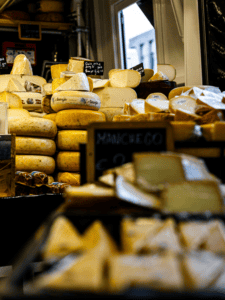
Types of cheese
Fresh Cheeses
Fresh cheeses are uncured and eaten soon after they are made—their high moisture content results in a soft, spreadable texture and a mild, milky flavor.
This is a good place to start if you’re stepping into the world of different cheeses.
A few examples include:
- Ricotta: Light, fluffy, and slightly sweet, ricotta is used in lasagnas, desserts, and breakfast dishes.
- Chevre (goat cheese): This versatile cheese has a tangy, earthy flavor and is delicious crumbled over salads or spread on crackers.
Soft-Ripened
Soft-ripened cheeses are characterized by their creamy interiors and bloomy rinds, which develop during the aging process.
These cheeses tend to have a delicate, buttery flavor that intensifies as they mature. Ones you’ve likely come across include:
- Brie: With its soft, velvety rind and rich, gooey interior, brie is a crowd-pleaser at any cheese board.
- Camembert: Similar to brie but with a stronger flavor, Camembert has a slightly mushroomy aroma and a lusciously smooth texture.
Semi-Soft
Semi-soft cheeses are usually more firm than fresh cheeses but still have a supple texture compared to this article’s other different cheeses.
Their flavors range from mild to pungent, depending on the aging process. Popular semi-soft cheeses include:
- Gouda: From the Netherlands, Gouda has a caramel-like sweetness and buttery finish. As it ages, it becomes firmer and more intense.
- Havarti: This Danish cheese has a smooth, creamy texture with a mild, tangy flavor, making it ideal for sandwiches or melting.
Hard
Hard cheeses are delicious when grated or sliced thinly.
Examples include:
- Parmesan (Parmigiano Reggiano): Revered as the “King of Cheeses,” Parmesan has a nutty, savory taste with crystals that add a delightful crunch. It’s essential for pasta dishes and risotto.
- Pecorino Romano: Made from sheep’s milk, Pecorino Romano is salty, sharp, and perfect for grating over pasta or adding a punch to savory dishes.
Blue
Blue cheeses have signature blue or green veins, created by adding mold cultures during production.
Their flavor can range from mildly tangy to intensely pungent. Well-known blue cheeses include:
- Gorgonzola: This Italian cheese offers a creamy texture with a rich, tangy flavor that pairs beautifully with honey, nuts, and pears.
- Roquefort: Made from sheep’s milk, Roquefort has a sharp, tangy bite and crumbly texture.
Washed-Rind Cheeses
Brine, beer, or wine bathing gives their cheese their strong aroma and a reddish-orange rind.
Despite their pungent smell, their flavor is often surprisingly mild and savory. Examples include:
- Taleggio: An Italian classic with a creamy texture and a fruity tang, Taleggio is excellent in risottos or melted on bread.
- Epoisses: A cheese from France, Epoisses is famously pungent but offers a smooth, rich, and slightly sweet flavor beneath its bold exterior.
Wrapping It Up
Cheese is a culinary treasure with endless possibilities for pairing and savoring. Whether you’re indulging in a creamy brie, a nutty gouda, or a robust Roquefort, each cheese type offers a unique sensory experience.
Next time you build a cheese board or cook a dish, experiment with different varieties to expand your palate and elevate your meals. Check out our full range for inspiration!

